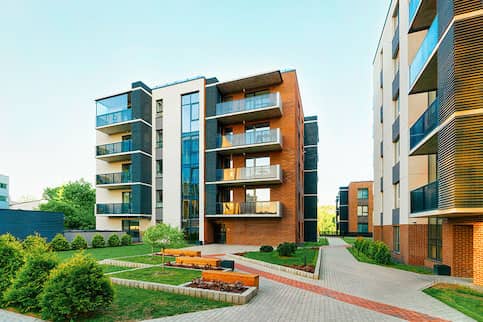How Condominium HOA Regulates Shared Areas and Improves Community Harmony
The governance of common rooms within a condominium association plays an essential role in fostering neighborhood communication and preserving building worths. Through the establishment of extensive guidelines, the Condominium HOA not only regulates the use of common services yet likewise promotes a culture of regard and responsibility among homeowners.
Duty of the HOA
The house owners association (HOA) serves as the regulating body for condo neighborhoods, playing a critical duty in maintaining the home and advertising a natural living atmosphere. It is in charge of imposing and enacting community rules and guidelines, which are created to maintain the aesthetic worth and performance of the common area. This governance makes sure that all locals adhere to a standardized set of expectations, fostering a feeling of unity among diverse home owners.
Additionally, the HOA manages the economic elements of the area, consisting of budgeting, accumulating fees, and maintaining usual areas. This monetary oversight is essential in ensuring that required maintenance and improvements are accomplished without delay, improving residential or commercial property values with time. The HOA also acts as a liaison between citizens and exterior entities, such as city government and solution carriers, addressing communal problems efficiently.
Furthermore, the HOA often arranges community occasions and programs, urging neighborly interactions and developing connections among locals. By promoting open interaction and attending to grievances, the HOA adds to an unified living atmosphere. Thus, its multifaceted role is essential in ensuring the smooth procedure and total contentment within condominium neighborhoods.
Policies for Shared Spaces
Effective administration in condo neighborhoods demands clear rules for common spaces, which are essential for preserving order and advertising a feeling of neighborhood amongst locals. These guidelines function as standards that ensure everybody can delight in typical areas, such as swimming pools, yards, and entertainment facilities, without problem.

Moreover, sanitation and maintenance standards are vital, frequently stipulating that homeowners have to tidy up after themselves and report any kind of damages to the homeowners' association. By plainly connecting these assumptions, the HOA can minimize misconceptions and motivate regard among homeowners.
Inevitably, well-defined policies for shared spaces add to the general high quality of life in a condominium neighborhood, allowing residents to exist together quietly while appreciating the amenities that enhance their living experience. condo hoa.
Significance of Area Standards

Area guidelines play a substantial role in promoting a respectful and cohesive setting within condo organizations. These standards develop clear expectations for locals, promoting a sense of responsibility and shared obligation. By defining acceptable actions and web methods, neighborhood standards help prevent misunderstandings and conflicts among citizens.
In addition, these standards offer as a structure for preserving the useful and aesthetic honesty of common areas. They make sure that all locals adhere to standards concerning residential property upkeep, noise degrees, and use of common facilities. This uniformity not just improves the visual allure of the neighborhood but additionally contributes to overall property worths, benefiting all homeowners.

Problem Resolution Strategies
Browsing disputes within a condominium organization needs a structured strategy to make sure fair and reliable resolution. Reliable dispute resolution strategies usually start with open communication, urging locals to voice problems in a respectful way. Establishing an assigned channel for complaints, such as an idea box or an online discussion forum, can promote this process.
Arbitration is an additional critical method, wherein a neutral 3rd party assists challenging locals get to a mutually reasonable option. This method promotes cooperation and understanding, reducing hostility - condo hoa. The HOA board need to also establish clear treatments for resolving complaints, making certain all celebrations recognize the actions involved
Regular conflict resolution training for board members can improve their capacity to handle disputes efficiently. Using a distinct structure, such as the "Interest-Based Relational Technique," aids concentrate conversations on interests as opposed to positions, promoting a solutions-oriented attitude.
Advantages of Area Consistency
Cultivating area consistency within a condo organization brings countless benefits that boost the total living experience for homeowners. An unified area urges cooperation and participation amongst next-door neighbors, causing a much more kindly ambience. When homeowners really feel reputable and connected, they are most likely to involve in public activities and join decision-making processes, causing a more powerful sense of belonging.
Furthermore, neighborhood consistency considerably reduces misunderstandings and disputes, which can or else interrupt everyday life. A relaxed atmosphere minimizes anxiety and advertises mental well-being, permitting citizens to enjoy their homes totally. Furthermore, harmonious connections often convert into raised building values, as prospective buyers are attracted to neighborhoods characterized by security why not find out more and cooperation.

Final Thought
In recap, the duty of the Apartment HOA is get more critical in promoting and governing common spaces area consistency. condo hoa. With the facility of clear policies and community standards, locals are urged to maintain a accountable and respectful setting. Efficient problem resolution techniques better improve interaction and collaboration amongst homeowners. Eventually, the initiatives of the HOA add to a cohesive area, promoting both building values and general resident satisfaction. The positive influence of these initiatives is necessary for continual communal wellness.
Furthermore, the HOA typically arranges neighborhood occasions and programs, urging neighborly communications and constructing relationships among residents. By delineating appropriate behaviors and practices, community guidelines assist avoid misunderstandings and disputes among locals.
Furthermore, neighborhood guidelines help with efficient communication among residents and the Homeowners Association (HOA) Through the facility of clear regulations and area standards, citizens are motivated to preserve a respectful and accountable setting. Inevitably, the efforts of the HOA contribute to a cohesive area, advertising both home values and overall resident satisfaction.